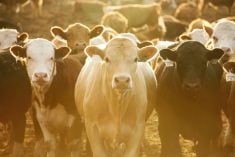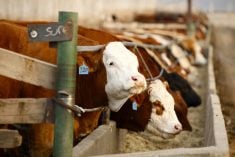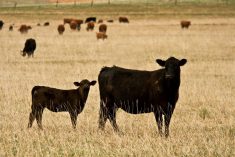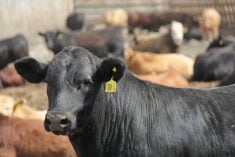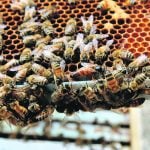Compared to the previous week, western Canadian feeder cattle sold steady to $4 higher the week ending March 23.
Favourable spring weather enhanced demand for yearlings from major finishing operations; Lethbridge-area markets were notably $3-$5 higher as feedlots focused on local cattle. While feeding margins remain in negative territory, strength in the deferred live cattle futures spilled over into the spot feeder market. Feed barley prices continue to percolate higher and rail movement of U.S. corn is running behind schedule. Feedlots that were not well covered with sufficient feed grain reserves were on the sidelines. The market was firmer but there were few buyers at the higher levels for this reason.
Read Also

U.S. grains: Soy futures post biggest monthly gain in nearly five years on China trade optimism
U.S. soybean futures climbed to a 15-month high and posted their biggest monthly gain in nearly five years on Friday following a rally fueled by the prospect of revived exports to China.
Calves were relatively unchanged from the previous week. Forage supplies are running low in many areas. While pastures are in good condition, most of Western Canada has received less than 40 per cent of normal precipitation over the past 30 days. Buying interest from the farmer-cattle producer has subsided while feedlots focused on yearlings. The year-round backgrounder appeared to be the main player in the calf market last week.
In central Alberta, Simmental mixed steers with medium to lower flesh levels averaging 930 lbs. were quoted at $174; tan mixed larger-frame heifers averaging just under 950 lbs. with very little butter were valued at $161. In central Saskatchewan, fleshier larger-frame black steers weighing 720 lbs. were quoted at $197 while similar-quality heifers averaging 700 lbs. reportedly sold for $179. In southern Alberta, black steers weighing 615 lbs. were quoted at $228 while black heifers weighing 576 lbs. were quoted at $204.
U.S. Agriculture Secretary Sonny Perdue told Fox Business Network on March 19 that the governors of Nebraska and Iowa told him that up to one million calves may have been killed. Feeder cattle futures appear to have then incorporated a risk premium due to the uncertainty in supplies. This is likely a “buy the rumour, sell the fact” situation.
— Jerry Klassen manages the Canadian office of Swiss-based grain trader GAP SA Grains and Produits Ltd. and is president and founder of Resilient Capital, specializing in proprietary commodity futures trading and market analysis. Jerry consults with feedlots on risk management and writes a weekly cattle market commentary. He can be reached at 204-504-8339.




